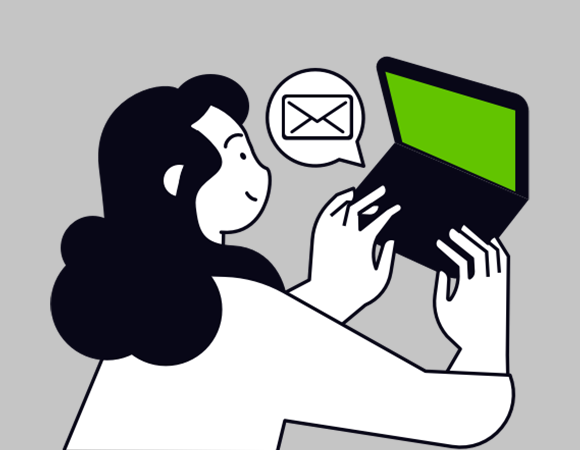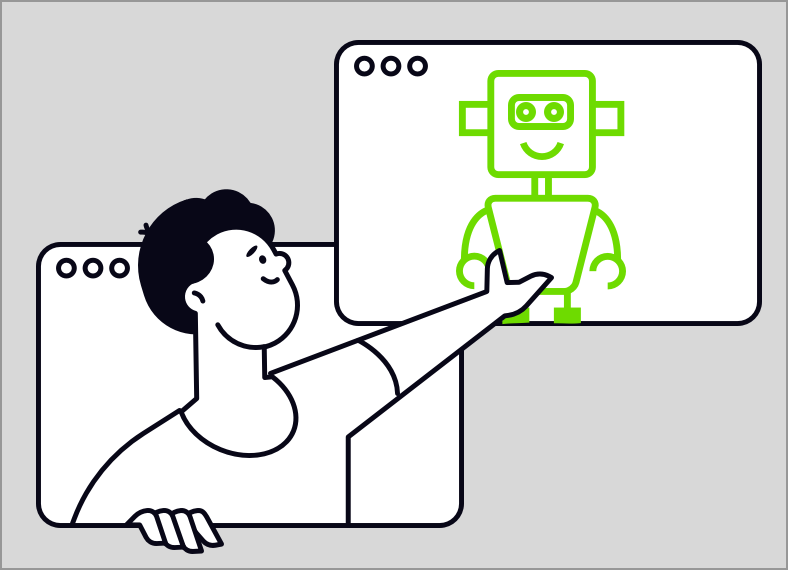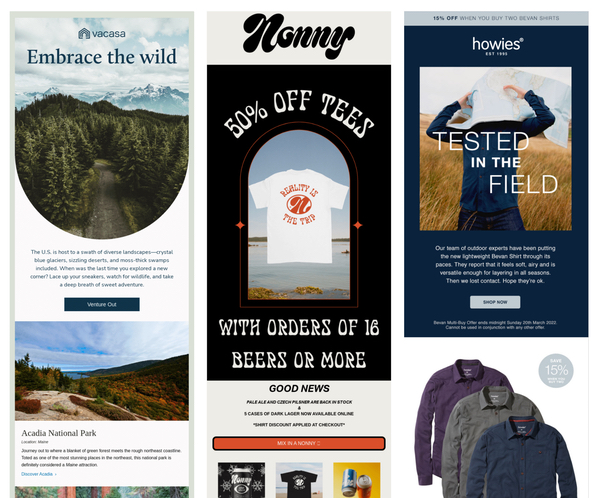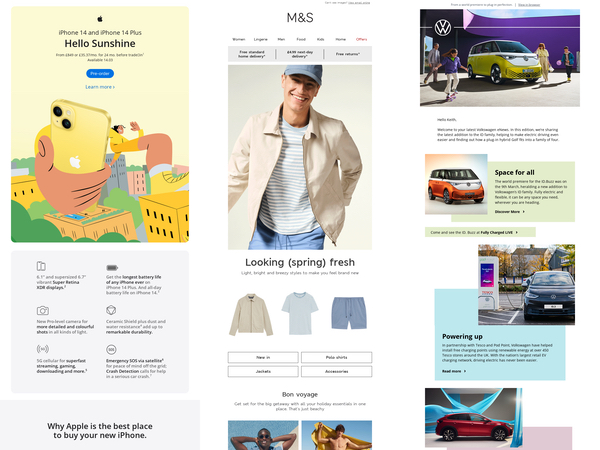Ten seconds. That’s how much time the average customer dedicates to your marketing email. If you’ve written this:
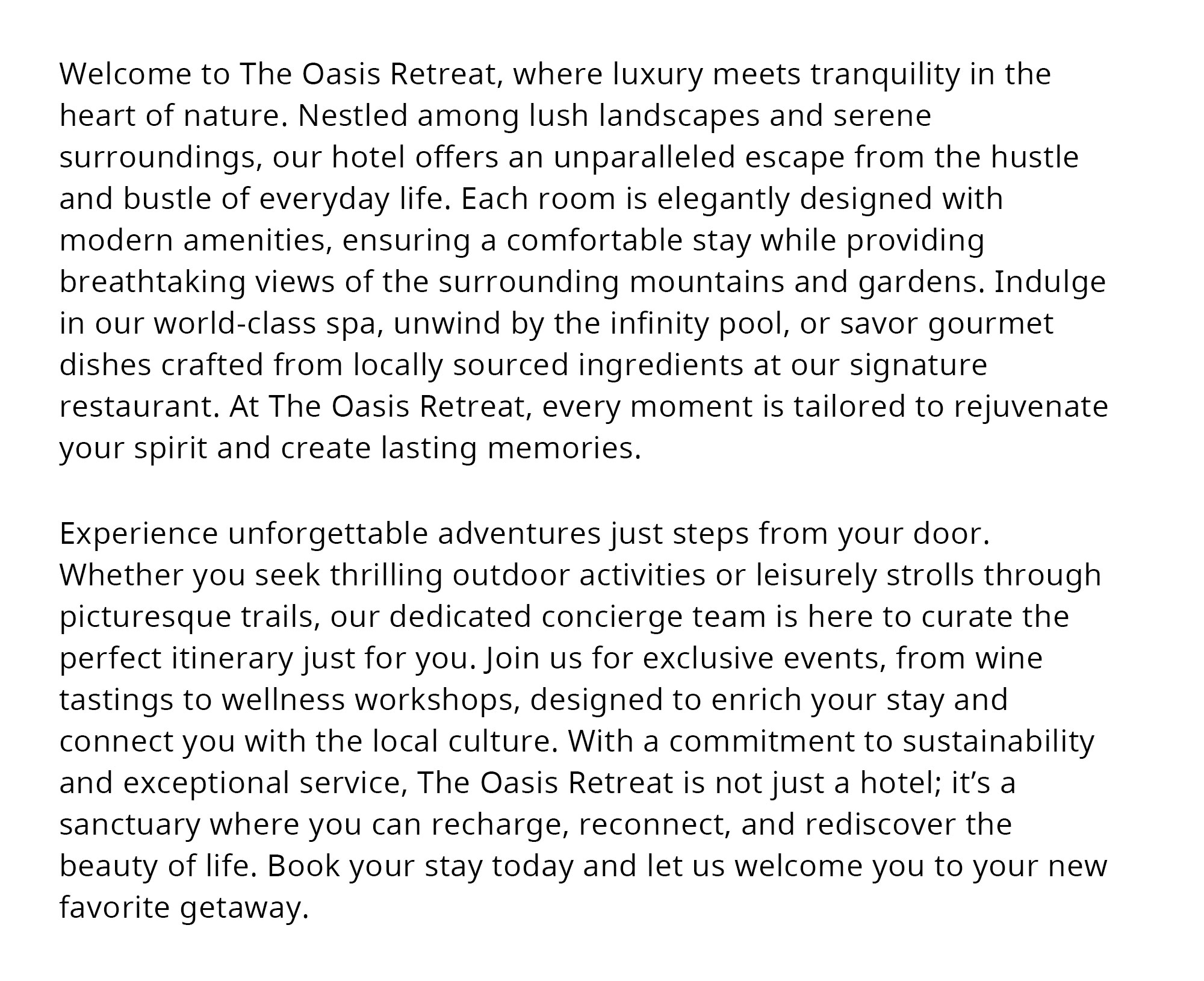
…then your customer is going to see this:
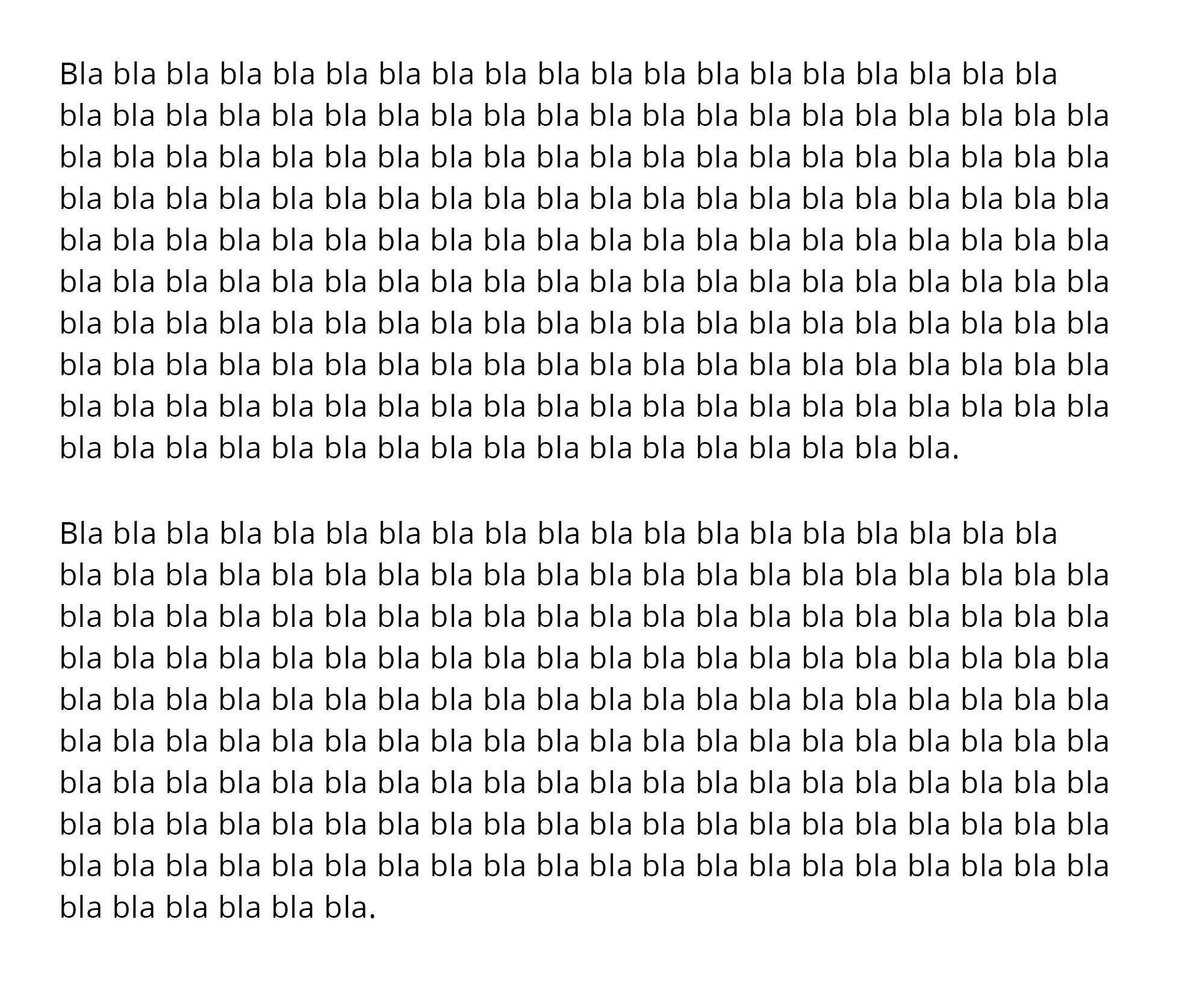
All that copywriting for nowt! So, how can a marketing email deliver its message when up against such a strict time limit?
Wear the shoes
This is step one: put yourself in your customer’s position. Would you read all that text? What do you want from a marketing email?
If it seems too wordy, it is. Treat email marketing like the shop window. Display enough information to capture someone’s interest, but leave the fine details to the salesperson standing inside.
Format for scanning
Nobody reads paragraphs of marketing spiel from left to right like a book. They scan it. You can help them (and yourself).
We don’t want the important points merely to stand out. They need to jump out and scream for attention. Headings, bold text, bullet points – there are plenty of typograhical formatting options at our disposal.
Remove excess padding
I see a lot of big, bloated marketing emails. They’re crammed full of… stuff. Navigation bars. Extensive footers. Tons of secondary links. Boring recurring blocks. And of course, lots and lots of words.
And that’s a pity, because every extraneous thing makes an email less focused and obfuscates its purpose. It can also be a telltale sign of spray & pray marketing. No idea who likes what? No problem, just send everything to everyone! We’re kidding, don’t do that.
Take a step back to evaluate what exactly you want a particular email to achieve. Be ruthless when trimming the fluff and you’ll be rewarded with a purpose-driven mailing that slots nicely into that ten-second reading time.
Graphic communication
As the adage goes, a picture is worth a thousand words. Turns out that may be a pretty conservative estimate. The human brain can process an image in 13 milliseconds. That’s 60,000 times faster than it processes text. And that’s a very, very good reason to use images as a form of communication in email.
Charts and diagrams offer a digestible, bite-sized form of information that is well-suited to the medium. Animated GIFs let you show your customer something about your product that just wouldn’t have the same impact in words. Quite simply: graphic communication is powerful.
Just don’t get too carried away with images! Your email must be accessible, so your text content, imagery and alt tags need to work together.
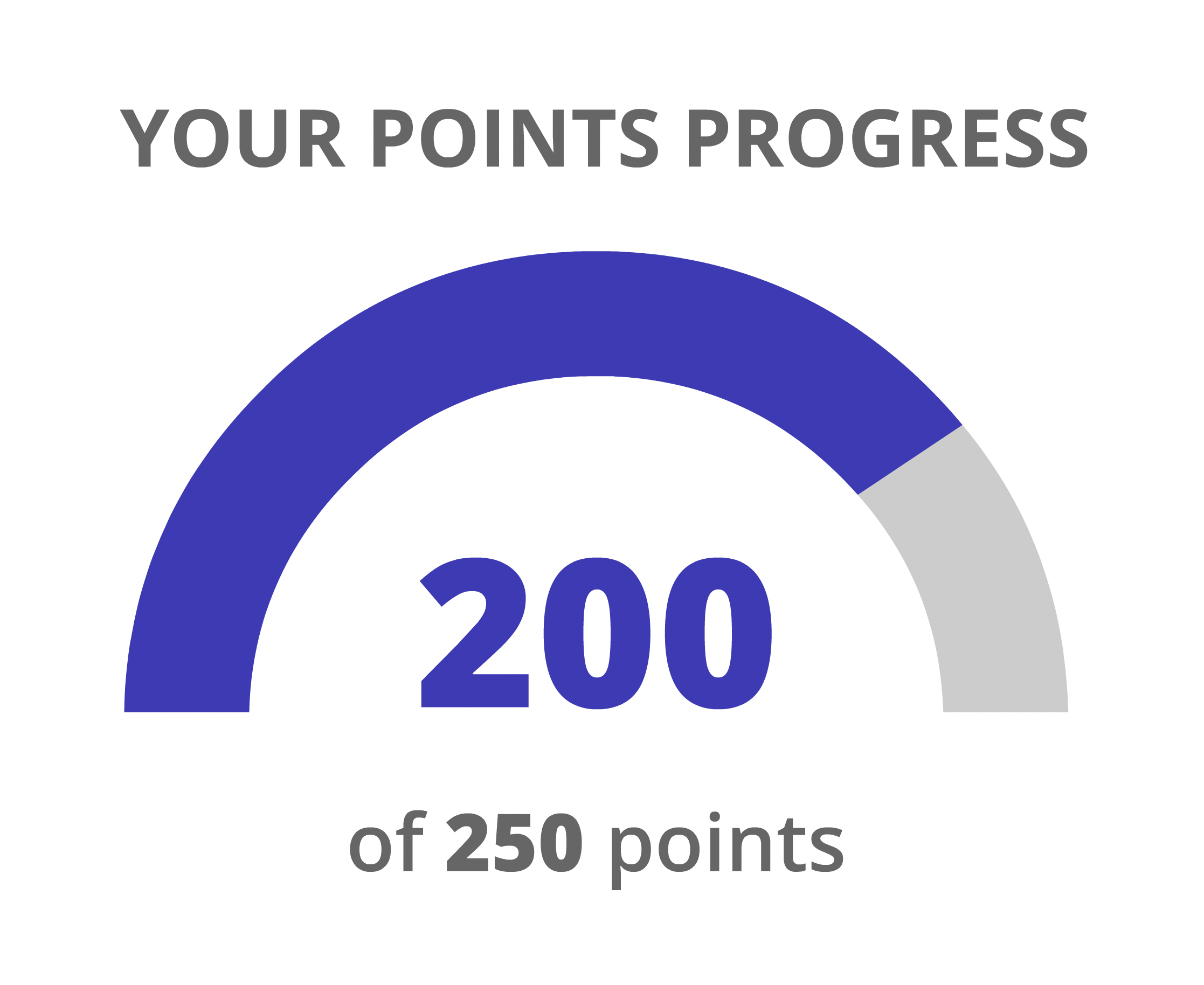
Don’t be boring
If your marketing emails follow a rigid format, they’ll become boring fast. Mix up the type of content that you send to customers. Have something to say beyond BUY NOW and ONLY FOR YOU. Give your reader a reason to keep opening your emails.
What’s the rush anyway?
Gosh, we all spend so long crafting our marketing emails only for readers to chew them up in mere seconds? What brought us to this point? There’s a lot of discussion, expert and casual, about the causes and consequences of dwindling attention spans. The impact of our ever-online world on the human brain is a fascinating topic.
But we’re not here to talk about that. We’re here to talk about email. I don’t see the ten-second read time as a bad thing. It can serve as a reminder about best practice and keep us focused on the goal. We can reel ourselves in and stop wasting time on cumbersome, meandering mailings. There are certainly positive aspects to this situation. And who has time these days for negativity?


